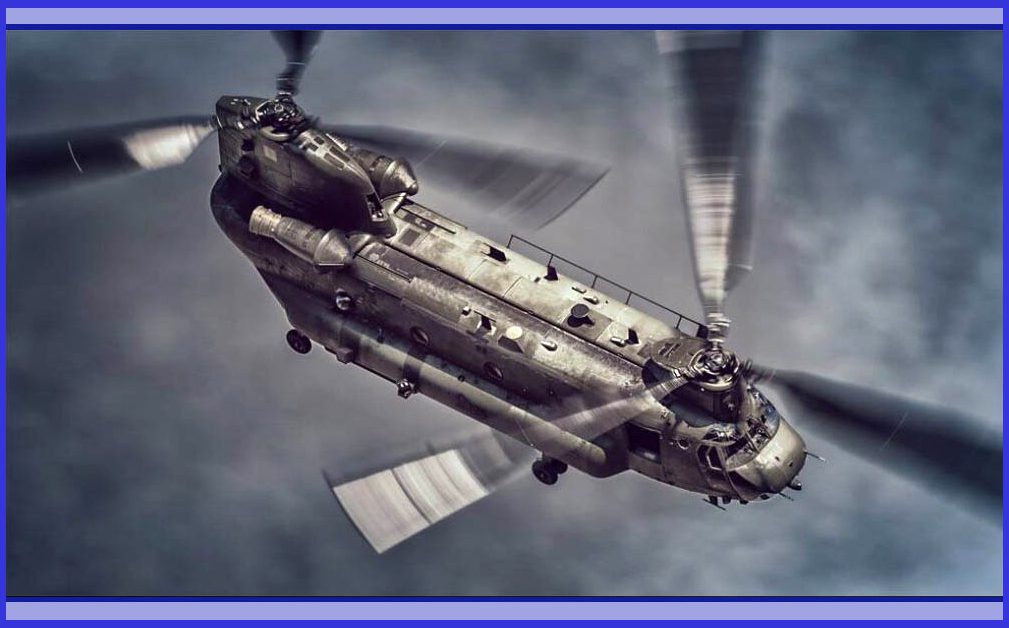Developed by Boeing, the Chinook Helicopter is a versatile and iconic tandem-rotor heavy-lift helicopter widely used by military forces worldwide. Discover the best of the Chinook Helicopter—an embodiment of unparalleled power and unwavering resilience that has left an indelible mark on the annals of military history.

From its inception to the present day, and for the next 50 years, the CH-47 stands as an invincible force in the skies, reigning supreme as a formidable multi-mission helicopter that surpasses all others in practicality and unwavering reliability. With unwavering dedication, it has firmly established itself as the epitome of excellence and the ultimate choice for any nation’s armies.
Renowned for its exceptional lifting capacity, the Chinook features a distinctive twin-rotor design, enhancing stability and cargo-handling capabilities. With a length of approximately 30 meters and a main rotor diameter of 18 meters, this formidable aircraft can carry heavy loads, troops, and equipment across challenging terrains. Powered by twin turboshaft engines, the Chinook boasts a top speed of around 302 km/h and a mission radius of 306 kilometres.

Its rear loading ramp facilitates quick and efficient embarkation and disembarkation of personnel and cargo. The Chinook’s adaptability, durability, and ability to perform in diverse environments make it a vital asset for military operations, humanitarian missions, and disaster relief efforts.

Chinook Helicopter Background
In late 1956, the United States Army publicly declared its intention to replace the Sikorsky CH-37 Mojave, an aircraft propelled by piston engines, with an innovative gas turbine-powered helicopter possessing increased power and lifting capacity. By September 1958, a collaborative Army–Air Force source selection board endorsed the medium transport helicopter manufactured by Vertol. Commencing its development in 1957, Vertol initiated the creation of a new tandem-rotor helicopter, officially designated the Vertol Model 107 or V-107.
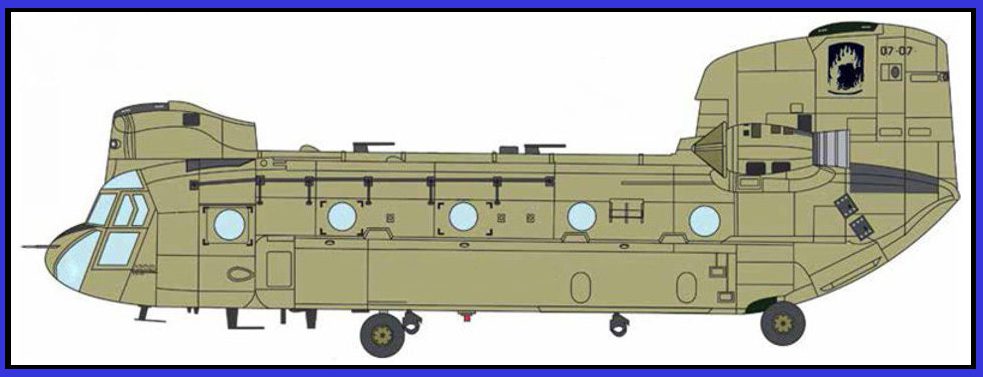
In June 1958, the U.S. Army formally contracted Vertol for the procurement of a limited quantity of rotorcraft, assigning it the YHC-1A designation. However, it became evident to Army officials that the design proved too heavy for the assault role and insufficiently robust for the broader transport function. Consequently, the Army issued a subsequent order to Vertol for an expanded iteration of the V-107, officially labelled as the HC-1B.
On September 21, 1961, the Boeing Vertol YCH-1B, in its preproduction stage, successfully conducted its inaugural hovering flight. In 1962, the HC-1B underwent a redesignation, becoming officially known as the CH-47A, by the 1962 United States Tri-Service aircraft designation system. Additionally, it was given the name “Chinook,” a reference to the Chinook people of the Pacific Northwest.
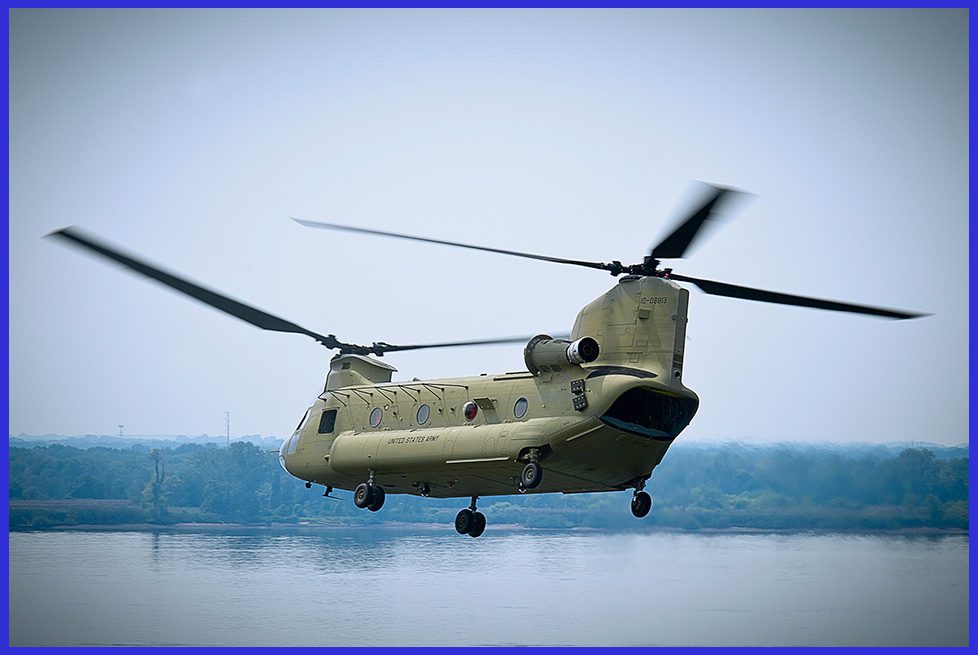
Design Overview of the CH-47 Chinook Helicopter
The CH-47 is propelled by two Lycoming T55 turboshaft engines, strategically positioned on either side of the helicopter’s rear pylon and linked to the rotors through drive shafts. In the initial models, each engine boasted a power of 2,200 horsepower. The counter-rotating rotors enable the utilization of all power for both lift and thrust, eliminating the need for an antitorque vertical rotor. This design feature allows for greater adaptability in adjusting the lift of either rotor, reducing sensitivity to variations in the centre of gravity—a critical factor in the lifting and lowering of cargo.
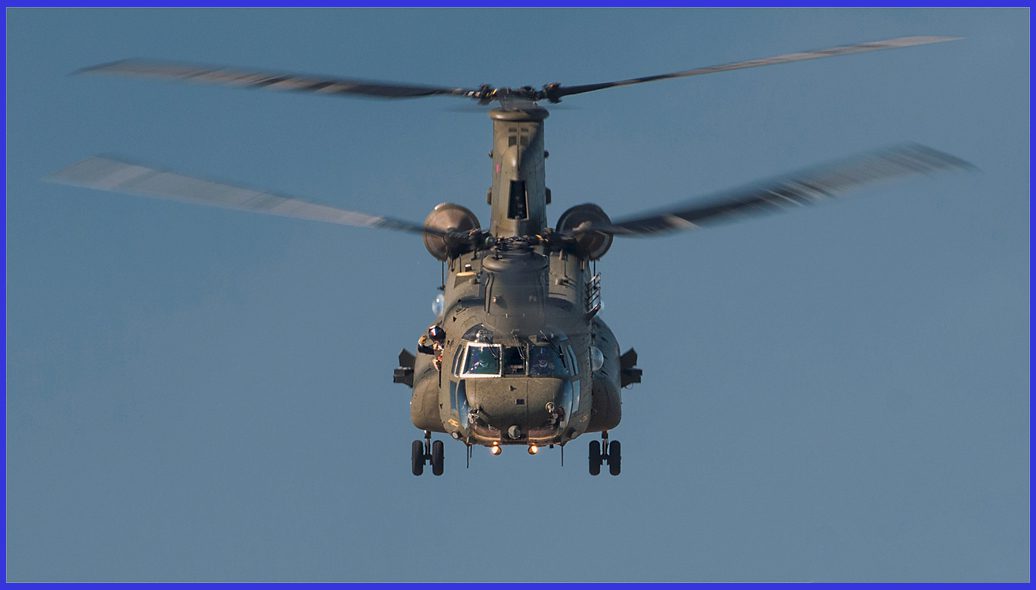
According to aviation experts, a twin-rotor helicopter exhibits greater stability than a single-rotor helicopter over a specific area when weight is either added or subtracted. This occurs, for example, when troops descend from or climb up ropes to the aircraft or when other cargo is dumped. In the event of one engine failure, the remaining engine can drive both rotors.
Since the CH-47 helicopter entered into service, various upgraded and more potent versions have been developed. The introduction of the CH-47D in 1982 marked the U.S. Army’s initial significant design advancement, aligned with their specific requirements. However, the upgrades implemented over the CH-47C encompassed newer engines, composite rotor blades, a redesigned cockpit aimed at reducing pilot effort, enhanced and redundant electrical systems, an improved flight control system, and upgraded avionics.
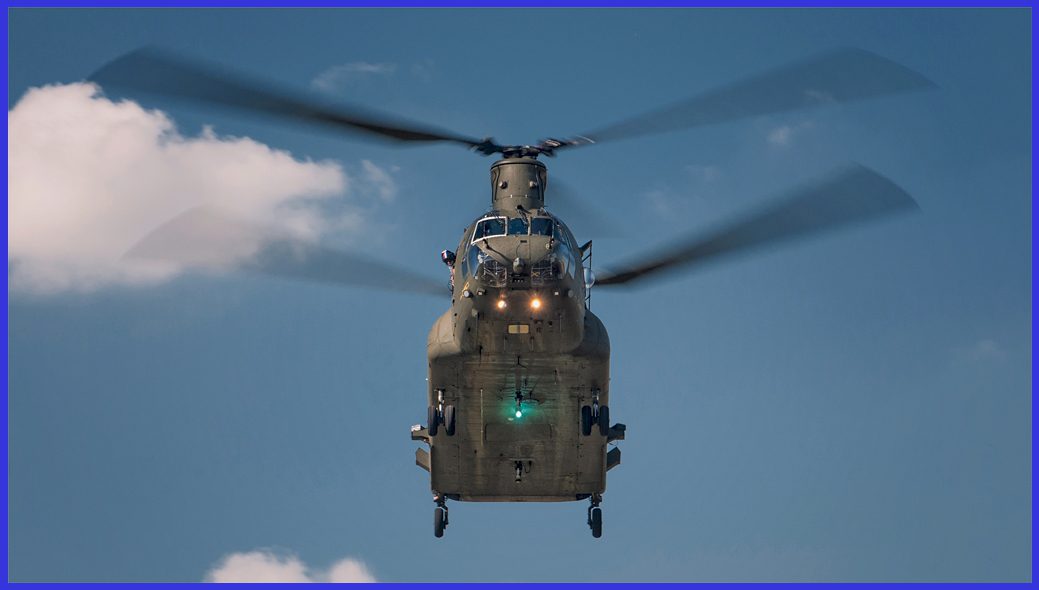
The CH-47F Chinook stands as the most recent model prominently featured in the mainstream market. Recognized as an advanced cargo helicopter, it plays a pivotal role within the context of the Army Vision. Significant improvements include the incorporation of more powerful and reliable T55-GA-714A engines, which serve as an upgraded iteration of the existing T55-L-712. These advanced engines contribute to a power increase, elevating it from 3,750 to 4,777 shaft horsepower and resulting in an approximate enhancement of 3,900 lb in the current high altitude/hot day lift performance.
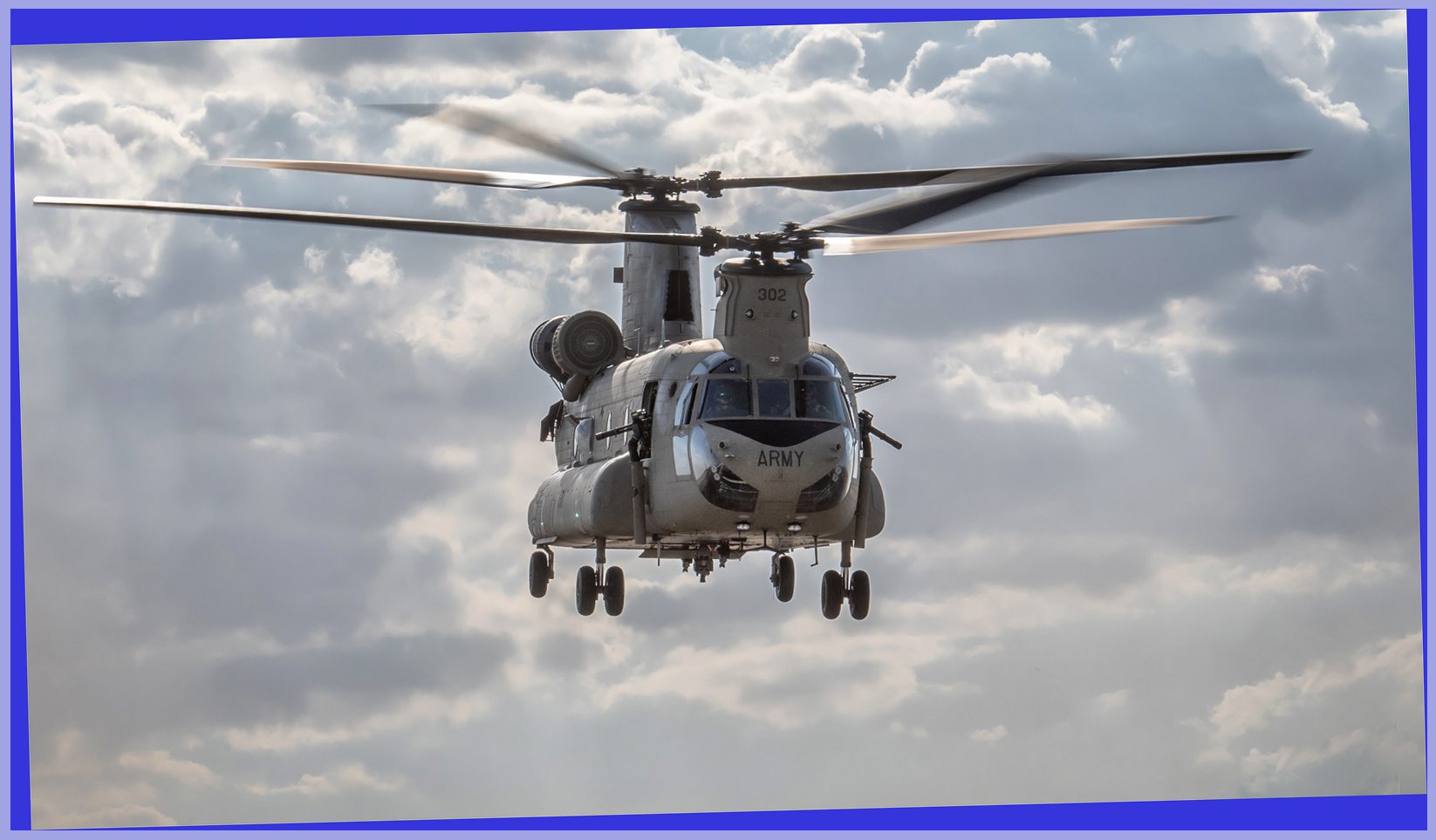
An additional feature encompasses the implementation of an enhanced crashworthy extended range fuel system (ERFS II) designed to facilitate Chinook self-deployment and extend the operational radius for various missions. A program is currently in progress to decrease operational and support (O&S) costs, achieved through collaborative development with the UK, specifically focusing on a low-maintenance rotor hub. Beyond the borders of the United States, the CH-47 has been produced under license in Italy and Japan as well.

CH-47 F(I) Chinook in Service with the Indian Air Force
Following government approval for the acquisition of advanced helicopters from the USA, the Indian Air Force (IAF) entered into a contract with M/s Boeing Ltd in September 2015. The agreement included the purchase of 15 Chinook Utility Transport helicopters and 22 Apache Combat helicopters. The procurement of these helicopters aims to bolster the IAF’s airlift capabilities and provide support for various military operations.
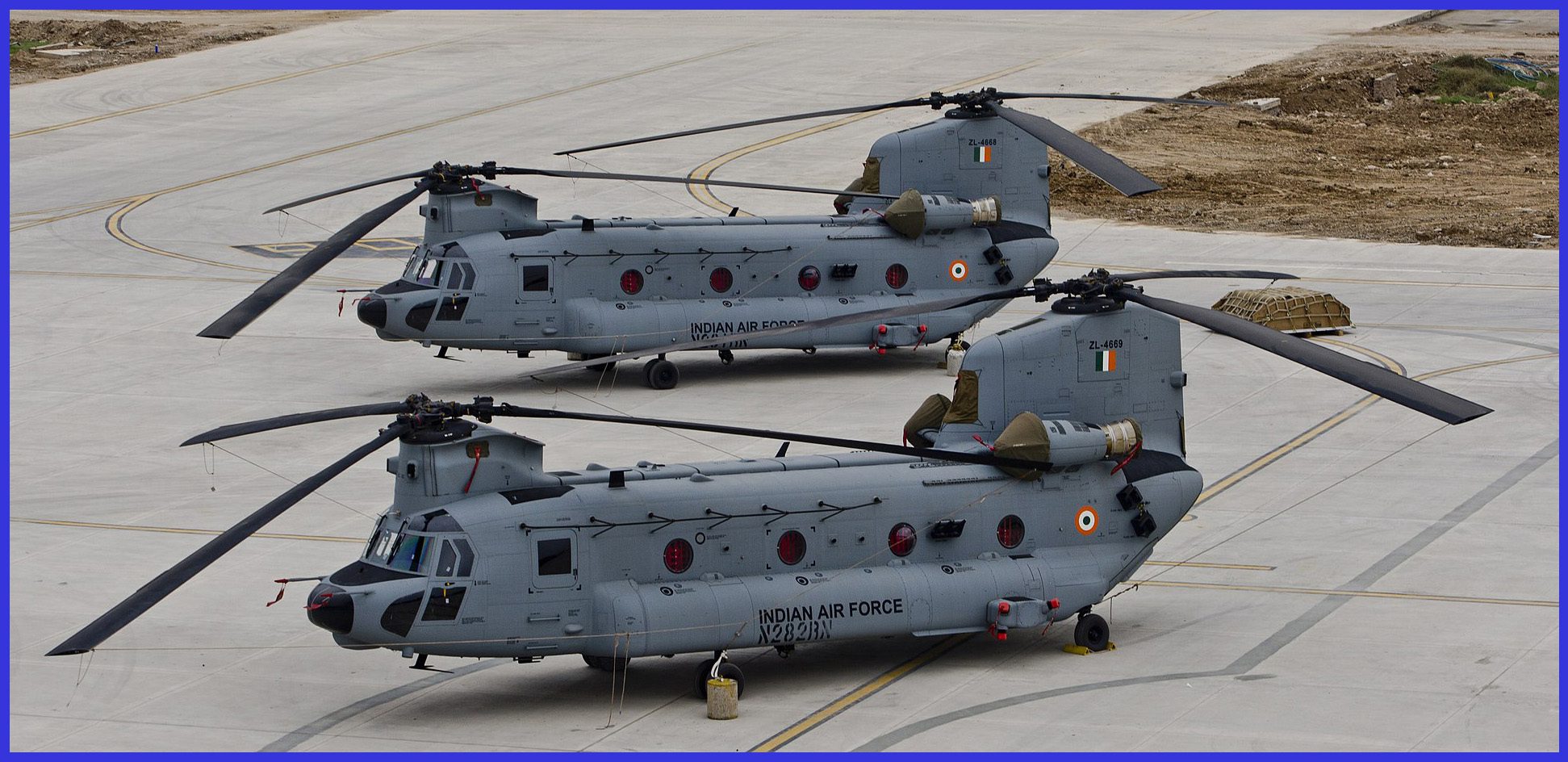
In March 2019, the Indian Air Force (IAF) formally integrated the CH-47F(I) (I-India) Chinook heavy-lift helicopters into its fleet at Air Force Station Chandigarh. Air Chief Marshal BS Dhanoa PVSM AVSM YSM VM ADC, Chief of the Air Staff, played a significant role as the Chief Guest during the induction ceremony, attended by various dignitaries. Boeing successfully completed the delivery of 15 CH-47F(I) Chinook helicopters to the IAF in 2020. These helicopters, renowned for their exceptional lifting capacity and versatility in transporting troops, cargo, and heavy equipment, are currently strategically deployed in the Northern and Eastern regions of India.

The introduction of the Chinook helicopters has significantly enhanced the IAF’s strategic airlift capabilities and operational reach. These helicopters have proven instrumental in supporting humanitarian missions, disaster relief operations, and military deployments in challenging environments.
The inclusion of the Chinook in the Indian Air Force highlights India’s dedication to the modernization of its military assets and the reinforcement of its capabilities to address evolving defence requirements. The helicopter’s reliability, versatility, and impressive lifting capacity contribute significantly to the IAF’s operational capabilities, allowing it to execute a diverse range of missions with both efficiency and effectiveness.

CH-47F Chinook Technical Specifications
- Crew: 3 members, comprising a pilot, copilot, and either a flight engineer or loadmaster.
- Capacity: 33–55 troops / 24 stretchers with 3 attendants
- Max payload: 10,886 kg ( 24,000 lb )
- Max Gross Weight: 22,680 kg (50,000 lb)
- Length: 98 ft (30 m)
- Fuselage Length: 52 ft ( 16 m )
- Width: 12 ft 5 in ( 3.78 m )
- Height: 18 ft 11 in ( 5.77 m )
- Powerplant: 2 × Lycoming T55-GA-714A turboshaft engines, 4,733 shp (3,529 kW) each
- Range: 400 mi ( 740 km ), Combat Range:_ 230 mi ( 370 km ), Ferry Range:_ 1,399 mi ( 2,252 km )
- Maximum speed: 315 km/h (196 mph)
- Cruise Speed: 296 km/h (184 mph)
- Service Ceiling: 20,000 ft ( 6,100 m )
- Sling-Load Capacity: 26,000 lb Centre hook, 17,000 lb Forward / Aft hook, and 25,000 lb Tandem
- Armament: Equipped with up to three pintle-mounted medium machine guns, with one positioned on the loading ramp and two located at the shoulder windows.

In conclusion, the Chinook helicopter stands as a symbol of aerial prowess, embodying versatility, power, and reliability. Its tandem-rotor design, impressive lifting capacity, and adaptability make it an indispensable asset in military and humanitarian endeavours across the globe. Whether navigating challenging terrains, swiftly transporting troops, or delivering vital cargo, the Chinook’s exceptional performance has solidified its place in aviation history. As a testament to engineering excellence, this iconic helicopter continues to play a crucial role in a myriad of missions, showcasing its enduring impact on military operations and the broader realm of airborne capabilities.

Important Announcement for Our Valued Readers!
After an article is published, it is possible that updates or changes may have occurred beyond the time of publication. Therefore, it is important to be aware that certain information in the article might be outdated. To ensure the most accurate analysis, it is highly recommended to verify the content with the latest sources available.
However, we are dedicated to delivering outstanding articles on military products and global updates. Maintaining quality and smooth operation requires resources. Your support sustains our efforts in providing insightful content. By purchasing high-quality products through our affiliated links, you help us keep our platform alive and acquire top-notch items. Your unwavering support is invaluable and inspires us to strive further.
We welcome your suggestions and requests for more information, as we value feedback from our readers. If there’s specific defence material or equipment not covered on our site, please share your request in the comments. We’ll strive to research and provide the required information. We sincerely thank you for your unwavering interest in our website, and we eagerly anticipate hearing from you! Enjoy your reading experience!
